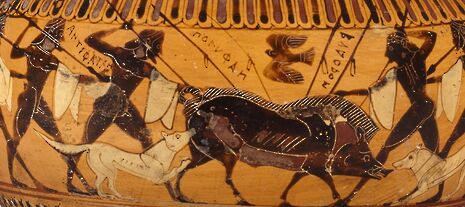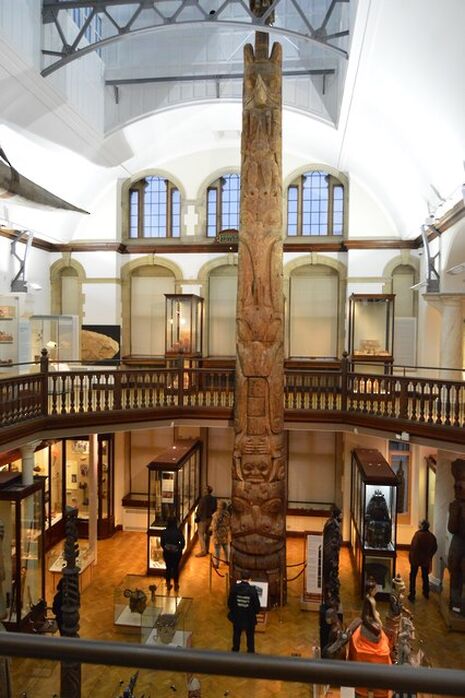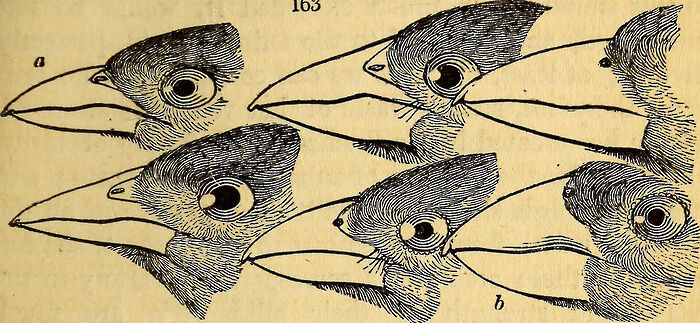What makes us human
Using a plethora of Cambridge artifacts and museums as a basis, what are our unique factors that define our species?

If you’ve ever wondered what makes us human, you’re in good company. Everyone from ancient philosophers to modern scientists have asked this in some way, and you will find just as many different answers. Cambridge’s many museums, each a treasure trove of collected knowledge, may provide answers to this.
Even human brains aren’t the largest to have ever existed
The Museum of Archaeology and Anthropology, presenting artefacts and artworks spanning thousands of years of human civilization across vast geographical ranges, suggests creativity and culture could be the source of our humanity. Alternatively, the new Museum of Zoology gives a rather different picture. The sole representation of our species here is a single skeleton standing resolutely upright next to a collection of our less well-postured ape relatives. Here, it is just our morphology that sets us apart from all the others; the lonely skeleton reveals little more than that.
Humans do indeed have unique physical traits that differentiate us from closely related primates, the chimpanzees and bonobos of the Pan genus. We are fully bipedal, with curved spines and wide hips supporting our erect stance, while chimps tend to traverse on all fours. Where chimps are covered in hair, we are comparatively quite naked, with sweat glands taking over our role of thermoregulation. Our skulls are perhaps the most noticeably different: flattened at the front but bulging at the back, with small teeth yet a huge cranial capacity relative to body size. Despite significant underlying genetic similarities (99% shared DNA is the figure often repeated), we are distinct in a number of ways – but of course, the story doesn’t end there.
None of these traits alone are particularly special. Standing on two legs is hardly new – the dinosaurs got there first. Mammalian hairlessness isn’t unheard of, either – just ask the naked mole rat. Even the big brains, which confer abilities such as tool use, language and cooking, and have allowed us to become so dominant as a species, aren’t even the largest to have existed. Rather, this honour belongs to our extinct cousin, Homo neanderthalensis.

Neanderthals, as they are more commonly called, first emerged around 200,000 years ago and persisted until as recently as 30,000, overlapping significantly with our own species (the first fossils of which are dated to around the same time). When Homo sapiens spread from Africa to Eurasia, they found the Neanderthals already settled in, and far better adapted at that. Their bodies were more robust and heavily muscled, with larger nasal cavities and other cold-climate specialisations, alongside the aforementioned larger brain. Ultimately, though, this seems not to have helped, as the only surviving member of the Homo genus is of course us.
Contrasting views exist of the fall of the Neanderthal and the rise of the human. Some paint it as a violent replacement, where humans outcompeted Neanderthals or even actively slaughtered them. Alternatively, the extinction of Neanderthals may not have been the death of a species, but instead the gradual absorption of it into our own through interbreeding and hybridisation. The evidence for this is clear to see – the human genome contains a small amount of Neanderthal-derived DNA, between 1 and 4% in Eurasians.
From this perspective, it is not our differences that are interesting so much as our similarities. Neanderthals are known to have buried their dead, as well as caring for the elderly and infirm. They even possessed speech structures homologous to those in humans. Ultimately, human success likely was due to a combination of adaptations including mastery of fire and written communication, but these are logical progressions rather than drastic leaps – as humans, we’re really not that dramatically different from Neanderthals, and indeed many of the other extinct Homo species.
Perhaps if we weren’t alone in our genus, and other hominids lived alongside us, we wouldn’t even feel the need to ponder such self-important, anthropocentric questions. A trip to the Sedgwick Museum of Earth Sciences reinforces this – pore through millennia of fossils, and you won’t see a trace of humans or our immediate relatives, other than a wall display about Darwin at the far end of one corridor. In the grander sense, we really are just a drop in the ocean hardly worth mentioning – very humbling, and oddly a little comforting.
 News / Cambridge study finds students learn better with notes than AI13 December 2025
News / Cambridge study finds students learn better with notes than AI13 December 2025 Features / Should I stay or should I go? Cambridge students and alumni reflect on how their memories stay with them15 December 2025
Features / Should I stay or should I go? Cambridge students and alumni reflect on how their memories stay with them15 December 2025 News / Uni Scout and Guide Club affirms trans inclusion 12 December 2025
News / Uni Scout and Guide Club affirms trans inclusion 12 December 2025 News / Cambridge Vet School gets lifeline year to stay accredited28 November 2025
News / Cambridge Vet School gets lifeline year to stay accredited28 November 2025 Comment / The magic of an eight-week term15 December 2025
Comment / The magic of an eight-week term15 December 2025









